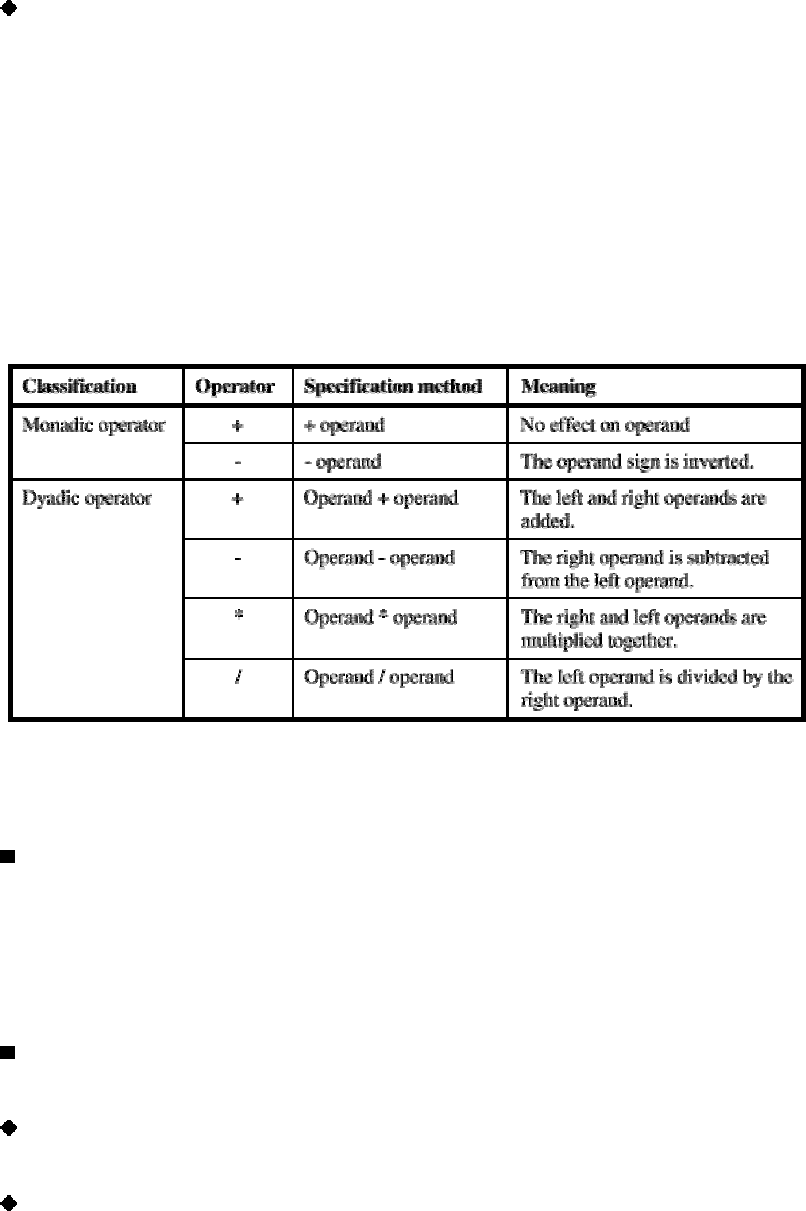
Dyadic operators
The following are the four dyadic operators:
+:
Addition
-:
Subtraction
*:
Multiplication
/:
Division
Table: Method of specifying and meaning of operational expressions shows the method of specifying, and the
meaning of, operational expressions.
[Table: Method of specifying and meaning of operational expressions]
Specify a column name, host variable, or literal in the operator. Alternatively, the result of the operational expression
can be specified as an operand. However, if an operational expression is specified in the operand of a monadic
operator, the operational expression must be enclosed in parentheses.
Priority of operations
The priority of operations is as follows:
1. Monadic operations
2. Multiplication and division
3. Addition and subtraction
Parentheses can also be used to specify priority. An expression within parentheses is executed before any other
operation.
Data types for results of operational expressions
This section explains the relationship between the data type for the result and the data type for the operand.
Data type for results of monadic operators
The data type for the results of monadic operators is the data type for the operand.
Data types for results of dyadic operators
Table: Data type for results of dyadic operators lists the data types for the results of dyadic operators. When more than
one operator is specified in an operational expression, the data type for the results is determined for each operator.
Follow the priority sequence for operators and apply the rules in Table: Data type for results of dyadic operators to all
the operators in the operational expression to obtain the final data type for the operational expression.
15


















